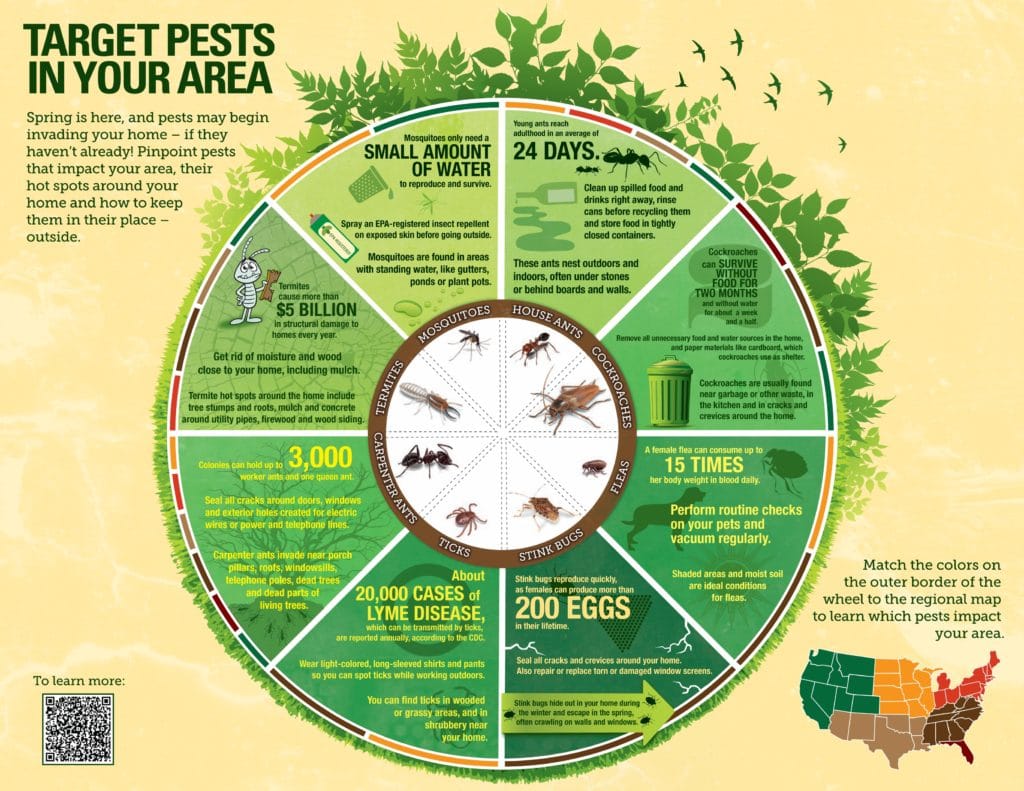The Role Of Parasite Exterminators In Environmental Sustainability
The Role Of Parasite Exterminators In Environmental Sustainability
Blog Article
Material Writer-Morales Dalsgaard
You may believe that insect exterminators are only interested in removing pests, but their role surpasses that. They play a crucial component in ecological sustainability.
By utilizing integrated parasite monitoring methods, they not only remove parasites however also guard biodiversity.
Additionally, they employ sustainable bug extermination approaches to reduce ecological risks.
So, next time you question the relevance of parasite exterminators, remember their payment to a greener and much healthier planet.
The Relevance of Integrated Parasite Monitoring
You must understand the relevance of incorporated parasite administration in keeping a sustainable environment.
Integrated Pest Monitoring (IPM) is a method that focuses on avoiding and regulating bugs while reducing using hazardous chemicals. By executing IPM strategies, you can successfully manage insect populations without triggering injury to the setting.
One essential aspect of IPM is using organic controls, such as predators and bloodsuckers, to naturally regulate pest populaces. This minimizes the need for chemical pesticides, which can have damaging effects on wild animals and communities.
In addition, IPM promotes using cultural and physical controls, such as crop rotation and exemption methods, to stop pests from coming to be a trouble in the first place.
Safeguarding Biodiversity With Bug Control
We can safeguard biodiversity through reliable pest control approaches that focus on the conservation of all-natural communities. By employing liable insect control practices, we can protect and maintain the delicate balance of species within our environment. Below are three methods which bug control adds to protecting biodiversity:
- ** Protecting indigenous vegetation and animals ** - By targeting intrusive varieties that endanger native plants and animals, insect control aids guarantee the survival of indigenous varieties and maintains the natural variety of environments.
- ** Stopping the spread of conditions ** - Regulating insects such as insects and ticks lowers the threat of illness spreading to wild animals populaces, securing biodiversity and protecting against prospective episodes.
- ** Saving endangered Identify rodent infestation ** - By taking care of parasites that victimize or compete with endangered types, pest control efforts can enhance the possibilities of survival and promote the recuperation of susceptible populaces.
Via accountable bug control methods, we can proactively add to the preservation of biodiversity and the sustainability of our natural world.
Mitigating Environmental Risks With Sustainable Parasite Elimination Techniques
By using sustainable insect elimination approaches, you can efficiently mitigate ecological risks while making sure the safety and security and wellness of both human beings and the natural ecosystem. Traditional parasite control approaches usually involve the use of damaging chemicals that can have detrimental effects on the atmosphere.
However, Health hazards of rodents focus on lessening these dangers by making use of eco-friendly options. For instance, integrated insect administration (IPM) strategies focus on making use of non-toxic and naturally degradable items, as well as all-natural killers to manage pest populaces. how to get rid of rats decreases the adverse impact on the setting but additionally aids to maintain the delicate equilibrium of the community.
Additionally, sustainable bug extermination techniques promote the conservation of biodiversity by targeting certain pests without hurting valuable organisms. By taking on these methods, you can add to a much more sustainable and environment-friendly technique to pest control.
Verdict
You are the pest exterminator, the guardian of nature's consistency. With incorporated pest monitoring, you stabilize the fragile ecological community, guaranteeing the survival of varied species.
Via sustainable techniques, you minimize ecological dangers, maintaining the delicate balance undamaged.
Like a symphony conductor, you orchestrate the rhythm and circulation, securing the biodiversity that dancings in perfect consistency.
With every action you take, you create a globe where nature grows, where pests pull back, and where sustainability preponderates.
